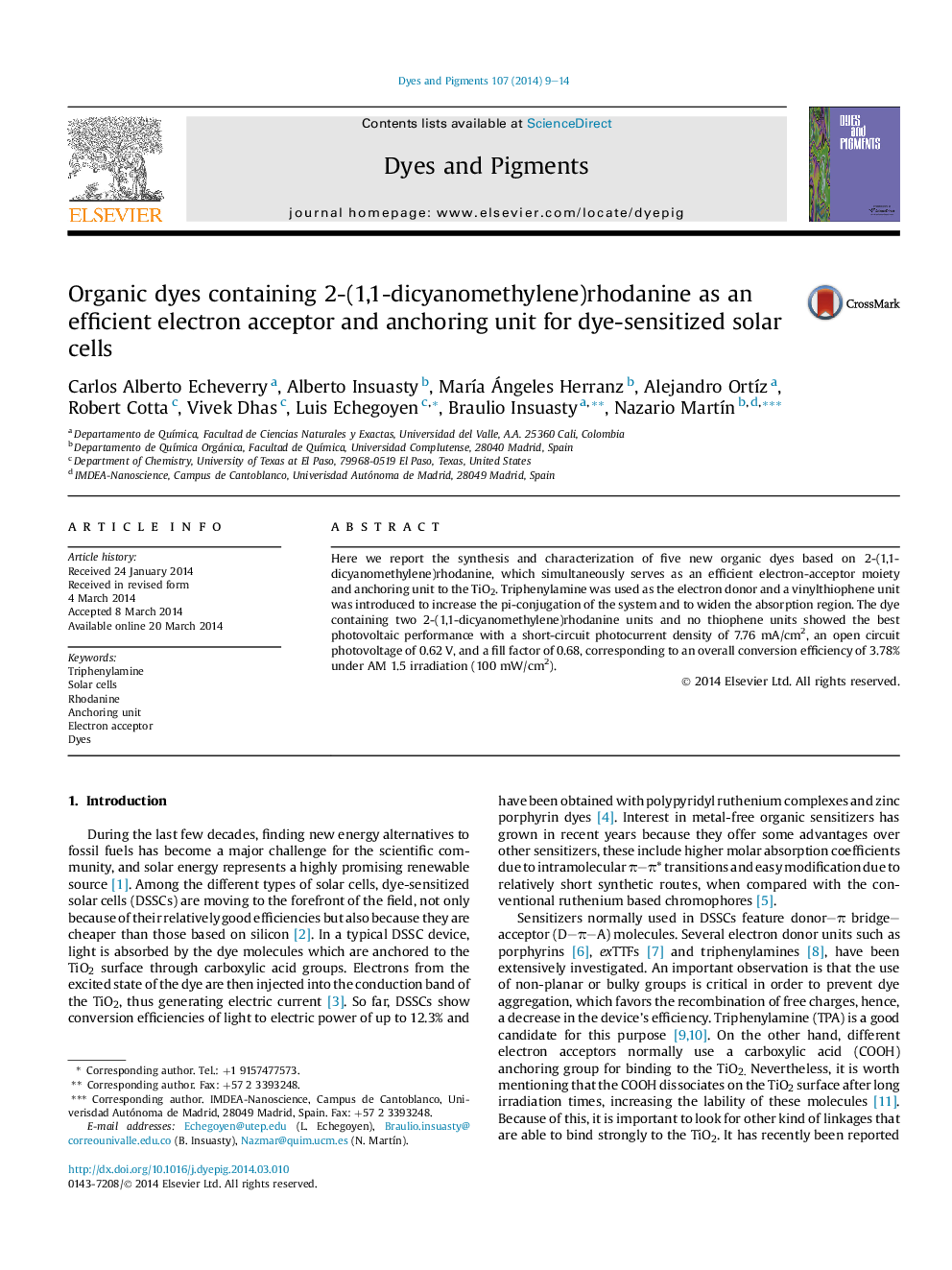| Article ID | Journal | Published Year | Pages | File Type |
|---|---|---|---|---|
| 176135 | Dyes and Pigments | 2014 | 6 Pages |
•New molecule with 2-(1,1-dicyanomethylene)rhodanine as an acceptor and dye anchor.•Highest efficiency of 3.78% with two binding sites to TiO2.•Structural changes are observed due to the addition of a thiophene molecule as a linker.•Synthetic routes that incorporate the use of microwave conditions.
Here we report the synthesis and characterization of five new organic dyes based on 2-(1,1-dicyanomethylene)rhodanine, which simultaneously serves as an efficient electron-acceptor moiety and anchoring unit to the TiO2. Triphenylamine was used as the electron donor and a vinylthiophene unit was introduced to increase the pi-conjugation of the system and to widen the absorption region. The dye containing two 2-(1,1-dicyanomethylene)rhodanine units and no thiophene units showed the best photovoltaic performance with a short-circuit photocurrent density of 7.76 mA/cm², an open circuit photovoltage of 0.62 V, and a fill factor of 0.68, corresponding to an overall conversion efficiency of 3.78% under AM 1.5 irradiation (100 mW/cm²).
Graphical abstractFigure optionsDownload full-size imageDownload as PowerPoint slide
